Top 20 Interesting Facts About The Arc de Triomphe
Originally published by Natalie on October 2021 and updated by Charity K on August 2022 and Updated by Vanessa R on July 2023 and Updated by Vanessa R in March 2024
The Arc de Triomphe is one of the most important monuments in Paris. It’s a tourist attraction on par with the Eiffel Tower, Sacre Coeur Basilica and Notre Dame.
The Arc is the monumental-sized archway where 12 main roads meet in the city center, one of them being the Champs Elysee. Technically, the Arc de Triomphe is the biggest plaza or public square in the city, though there isn’t really a communal area where civilians can hang out.
Here are 15 things you probably didn’t know about this important attraction.
1. The Arc de Triomphe was Commissioned by Napoleon
The contraction of the Arc was commissioned by Napoleon on August 15th in 1806.
It was his intent to honor the great French army in some way; a force that he deemed invincible considering they had conquered most of Europe.
It’s interesting to note that the day its commission was ordered was also Napoleon’s birthday. A secret gift to himself, perhaps?

by Mika Baumeister – Unsplash
2. The Space Was Almost Given Up to a Giant Elephant
Prior to talk of the Arc de Triomphe, French architect Charles Ribart had drawn up grand plans to construct a three-tiered elephant in the plaza where the Arc stands today.
The elephant would be gigantic and hollow, with staircases leading from the ground up into its gut where there would be elaborate furniture for people to laze around on.
Building was just about ready to commence when the French government suddenly changed their minds and denied the petition. Probably for the best, in retrospect.

by Simon Infanger – Unsplash
3. The Four Pillars Showcase Four Separate Sculptor Groups
If you go and observe the Arc up close, you’ll notice that each of the four pillars showcase individual sculptural works.
The first is dedicated to Le Départ de 1792 and was designed by by François Rude. This sculptor honors the French First Republic during the uprising that took place on the 10th of August.
The second is Le Triomphe de 1810 and was designed by Jean-Pierre Cortot. This commemorates the Treaty of Schönbrunn and features Napoleon being crowned in victory.
The third pillar showcases the Résistance de 1814 and was designed by Antoine Étex. It commemorates French resistance during the War of the Sixth Coalition.
Lastly, the fourth pillar represents the Paix de 1815, also designed by Antoine Étex. This one is commemoration of the Treaty of Paris.
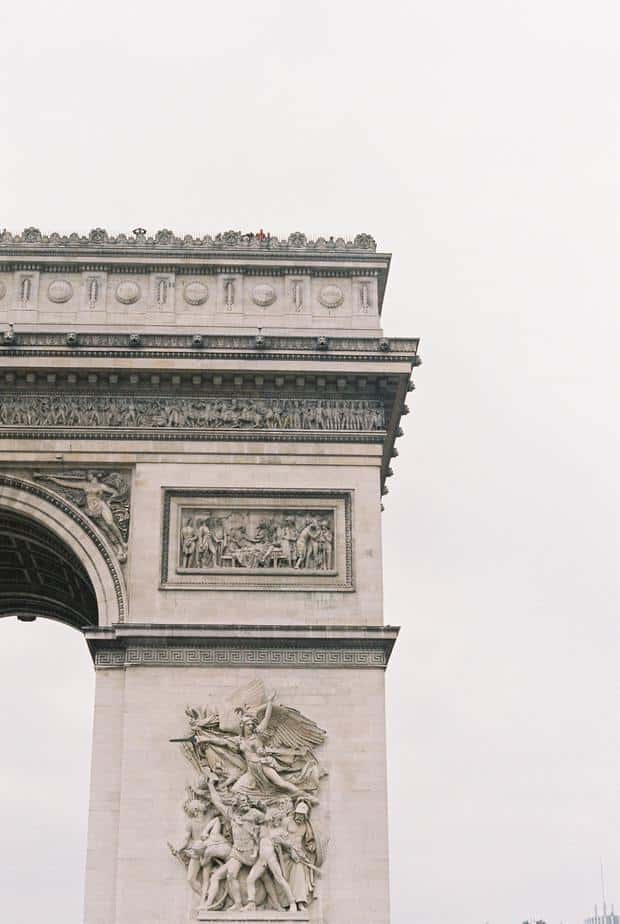
by Stevie Ekkelkamp – Unsplash
4. Many Artists Have Contributed to its Creation
Because of the grand scale of the monument, many artists had to be brought in over the years to bring the structure into completion.
The initial architect, Jean Chalgrin, passed away in 1811 when the work was still incomplete. Jean-Nicolas Huyot was brought in to take over, and he then commissioned the artists we read about in the design of the four pillars: Jean-Pierre Cortot, François Rude, Antoine Étex and James Pradier.
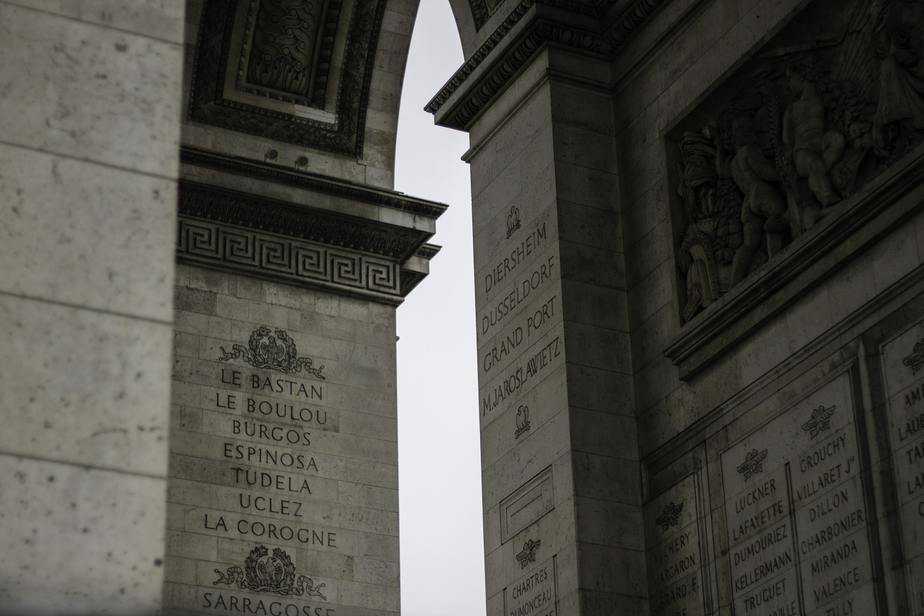
by Emily Bentley – Unsplash
5. A Wooden Replica of the Arc de Triomphe Was Made for Napoleon
Napoleon was not in power when the Arc de Triomphe saw completion. But in 1810 when he was getting married to his wife Marie-Louise, Napoleon had a smaller wooden replica of the Arc constructed, under which he and his wife tied the knot.
6. He Never Even Got to See the Finished Product
Napoleon was abdicated in 1814, and construction on the Arc was brought to a halt. It was more than a decade later, in 1826, when it resumed.
Unfortunately Napoleon passed away in 1821, so he never got to see the final product of his beloved project.
As an ode to him, the city of Paris did pass his body through the arch in 1840 when it was being moved to its final resting place at Invalides.
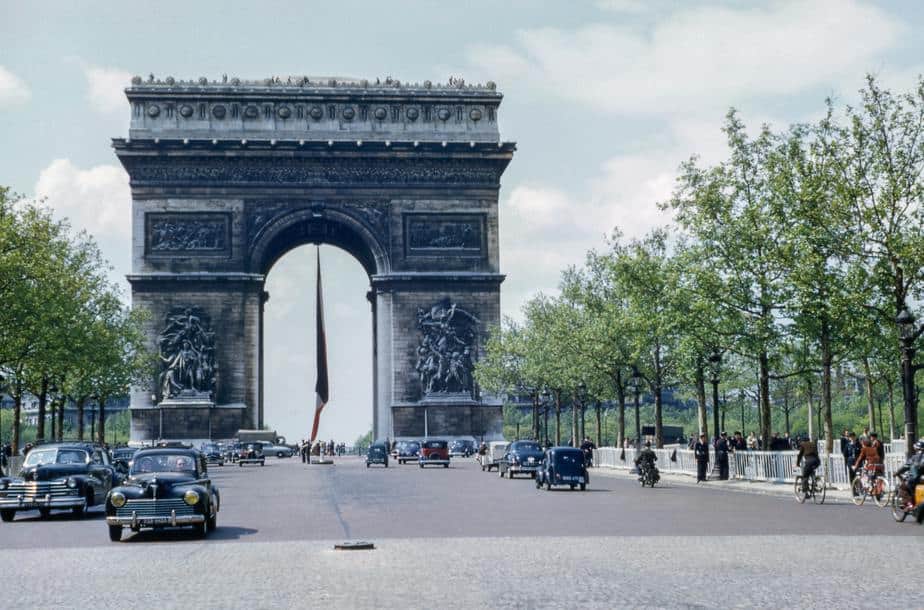
by Les Anderson – Unsplash
7. It is the Second Largest Triumphal Arch in the World
Believe it or not, there are many arches dedicated to triumph around the world.
The Arc de Triomphe was the largest on planet Earth all the way through until 1982, when North Korea unveiled their own triumphant arch that was considerably bigger than Paris’.
8. Two Assassination Attempts Have Taken Place at the Arc de Triomphe
Monsieur Charles De Gaulle, after whom the Paris airport is named, narrowly missed an assassination attempt on his life at the Arc de Triomphe. He famously survived over thirty of these attempts on his life during his time in the French capital.
Not long ago, in 2002, Jacques Chirac also narrowly beat an attempt to take his life at the same location. He was addressing troops during Bastille Day celebrations from an open top Jeep when a bullet was sent his way.
9. A Plane Was Once Flown Through It
A few weeks after WW1 drew to a close, Charles Godefroy flew his fighter plane right under the archway in commemoration of all the pilots that lost their lives during the battles.
Footage of this incredible feat is widely available online today, as it was caught on tape.
10. The Flame Has Been Burning for Almost 100 Years
The most important attraction at the Arc de Triomphe is the eternal flame, which was lit on 11th November 1923 and has not been extinguished since.
Every evening at 6:30pm, wreaths are laid into the flames by veterans to keep it eternally burning.

by Matt Seymour – Unsplash
Both the Arc de Triomphe and the neighborhood surrounding it are fascinating points of history in Paris. I recommend any of the Paris free guided walking tours through these central streets that will either start or finish at the iconic monument. An unmissable experience for anyone wanting to experience Paris at its most historic.
11. The Design was an ancient Roman Architecture
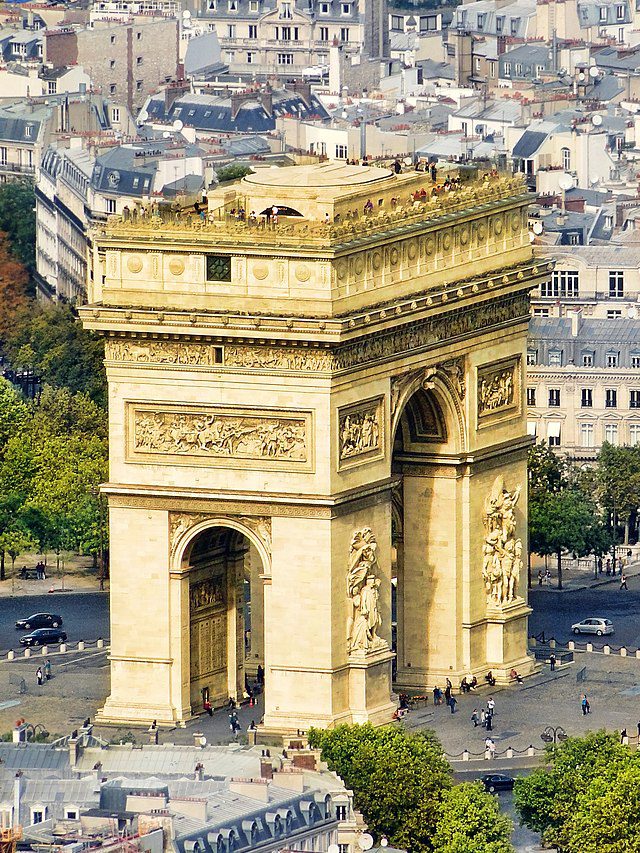
Photo by Wikimedia Commons – Wikimedia
The astylar design is by Jean Chalgrin (1739–1811), in the Neoclassical version of ancient Roman architecture. Major academic sculptors of France are represented in the sculpture of the Arc de Triomphe: Jean-Pierre Cortot; François Rude; Antoine Étex; James Pradier and Philippe Joseph Henri Lemaire.
The main sculptures are not integral friezes but are treated as independent trophies applied to the vast ashlar masonry masses, not unlike the gilt-bronze appliqués on Empire furniture.
The four sculptural groups at the base of the Arc are The Triumph of 1810 (Cortot), Resistance and Peace (both by Antoine Étex), and the most renowned of them all, Departure of the Volunteers of 1792 commonly called La Marseillaise (François Rude).
12. It had a representation of France Calling her People

Photo by Wikimedia Commons – Wikimedia
The face of the allegorical representation of France calling forth her people on this last was used as the belt buckle for the honorary rank of Marshal of France. Since the fall of Napoleon (1815), the sculpture representing Peace is interpreted as commemorating the Peace of 1815.
13. Names of those honoured included in the Arc
The names of those generals killed in battle are underlined. Also inscribed, on the shorter sides of the four supporting columns, are the names of the major French victories in the Napoleonic Wars. The battles that took place in the period between the departure of Napoleon from Elba to his final defeat at Waterloo are not included.
For four years from 1882 to 1886, a monumental sculpture by Alexandre Falguière topped the arch. Titled “The Triumph of the Revolution”. It depicted a chariot drawn by horses preparing to crush Anarchy and Despotism. It remained there only four years before falling into ruins.
Inside the monument, a permanent exhibition, conceived by artist Maurice Benayoun and architect Christophe Girault, opened in February 2007.
The steel and new media installation interrogate the symbolism of the national monument, questioning the balance of its symbolic message during the last two centuries, oscillating between war and peace.
Therefore, the Arc de Triomphe honors those who fought and died for France in the French Revolutionary and Napoleonic Wars, with the names of all French victories and generals inscribed on its inner and outer surfaces.
14. The main access to the Arc de Triomphe
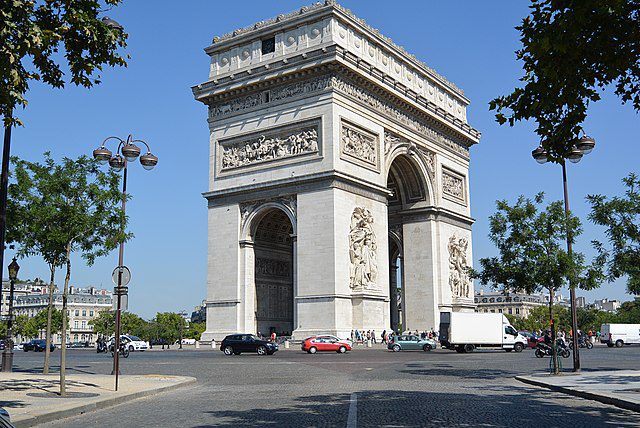
Photo by Wikimedia Commons – Wikimedia
To access the Arc de Triomphe, one has to go through the RER and Métro. The exit, however, is at the Charles de Gaulle–Étoile station.
Due to the heavy traffic on the roundabout of which the Arc is the center, it is recommended that pedestrians use one of two underpasses located at the Champs Élysées and the Avenue de la Grande Armée.
A lift will take visitors almost to the top – to the attic, where there is a small museum that contains large models of the Arc and tells its story from the time of its construction.
Another 40 steps remain to climb in order to reach the top, the terrasse, from where one can enjoy a panoramic view of Paris.
The location of the arc, as well as the Place de l’Étoile, is shared between three arrondissements, the 16th to the south and west, the 17th to the north while the 8th is at the east.
15. A view of the town from the top of the Arc de Triomphe is amazing
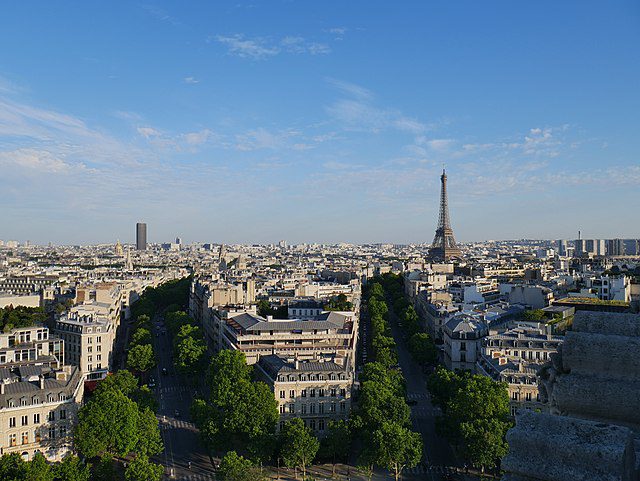
Photo by Wikimedia Commons – Wikimedia
For the tourists or anyone visiting Arc de Triomphe, it is worth the climb to the top just for the view down the tree-lined Champs-Elysées toward Place de la Concorde and the Louvre Museum. There’s no better way to appreciate just how grand and impressive the town is than from the top of Arc de Triomphe.
16. Arc de Triomphe is said to sit in the middle of a star

GillyBerlin, CC BY 2.0, via Wikimedia Commons
Place Charles de Gaulle is a square with the Arc de Triomphe at its centre. Because of the formation of a star at the intersection of twelve straight avenues, this square was formerly known as Place de l’Étoile (place of the Star).
Because of this, the Arc de Triomphe is considered to be built in the centre of a “star,” or étoile. It’s also the reason why this structure’s full name is the Arc de Triomphe de l’Étoile, which is another little-known truth about the Arc de Triomphe.
17. Its pillars represent important French victories
The pillars of the Arc de Triomphe celebrate significant French victories, which is not surprising given that the monument was built to honour the French Army.
The first one, Departure of the Volunteers of 1792/Le Départ de 1792 or La Marseillaise, honours the revolt that took place on August 10, 1792. The Treaty of Schönbrunn is shown in the next sculpture, The Triumph of 1810/Le Triomphe de 1810. The names of the third and fourth pillars are Resistance/La Résistance de 1814 and Peace/La Paix de 1815, respectively. While Peace honours the Treaty of Paris, which was signed in 1815, Resistance honours French resistance during the War of the Sixth Coalition.
18. The sun sets in the exact centre of the arch but only twice a year
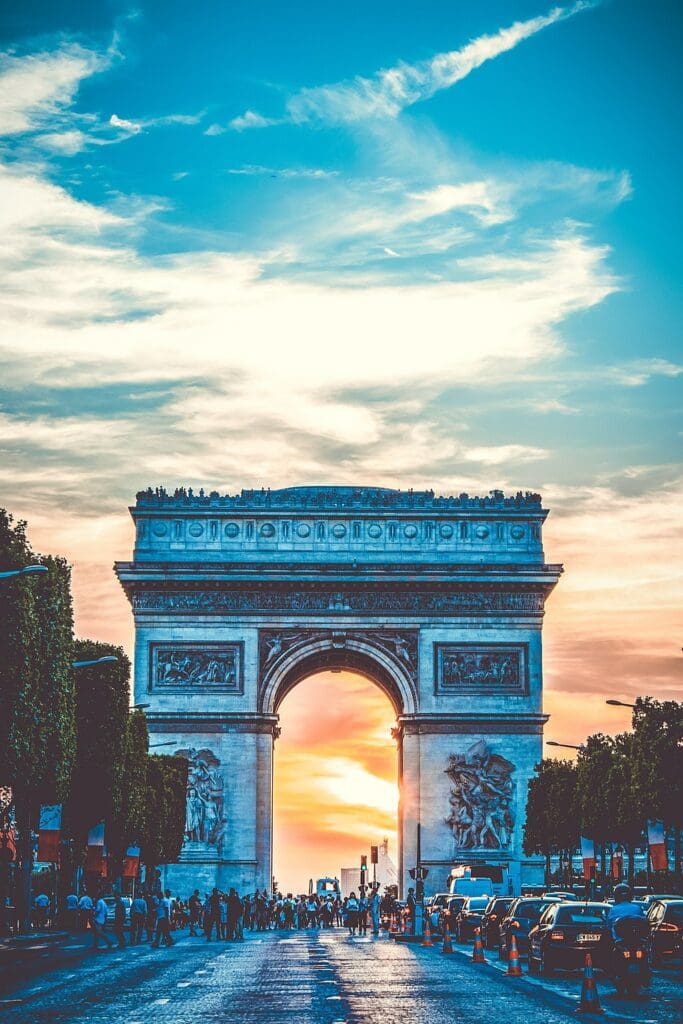
Ashley Elena, CC BY-SA 4.0, via Wikimedia Commons
In the precise middle of the arch, the sun sets twice a year. Although the exact timing may vary, this beautiful spectacle often takes place between May and August. Go go to the eastern end of the Champs-Élysées to see it in all of its splendour.
19. There was a time it was affected by pollution
Even during its lifetime, this monument wasn’t always so well kept. Because of coal-based smog and automobile pollution, the Arc de Triomphe was so filthy and heavily blackened in the 1960s. Fortunately, it was carefully cleaned and bleached from 1965 to 1966, and then it was returned to its original colour.
20. Arc de Triomphe became a rallying point for military troops
The Arc de Triomphe served as a military gathering place when construction was finished in 1836. French soldiers traditionally pass through the arch during the annual Bastille Day Military Parade and following victories. Since the construction of the Tomb of the Unknown Soldier, all military parades have avoided passing beneath the real arch.
A Look Into the People Whose Names are on the Arc
1. Napoleon Bonaparte

François-Anne David, Public domain, via Wikimedia Commons
Napoleon Bonaparte, the famous French military leader and emperor, has his name inscribed on the Arc de Triomphe. The monument was commissioned by Napoleon in 1806 to honor the French army’s victories.
Napoleon was a brilliant military strategist who led France to many victories and expanded its empire. He became the Emperor of France in 1804 and ruled until his defeat in 1815.
2. Louis-Nicolas Davout
Louis-Nicolas Davout was a French military commander and Marshal of the Empire during the Napoleonic Wars. He was one of Napoleon’s most trusted generals and played a significant role in many of the French army’s victories.
Davout was known for his strict discipline and tactical skills on the battlefield. He fought in many famous battles, including Austerlitz, Wagram, and Borodino.
3. Jean Lannes
Jean Lannes was another Marshal of the Empire and a close friend of Napoleon. He was known for his bravery and military skills, and he played a crucial role in many of the French army’s successes.
Lannes fought in numerous campaigns and battles, such as Marengo, Austerlitz, and Friedland. Sadly, he died in 1809 after being wounded at the Battle of Aspern-Essling.
4. André Masséna
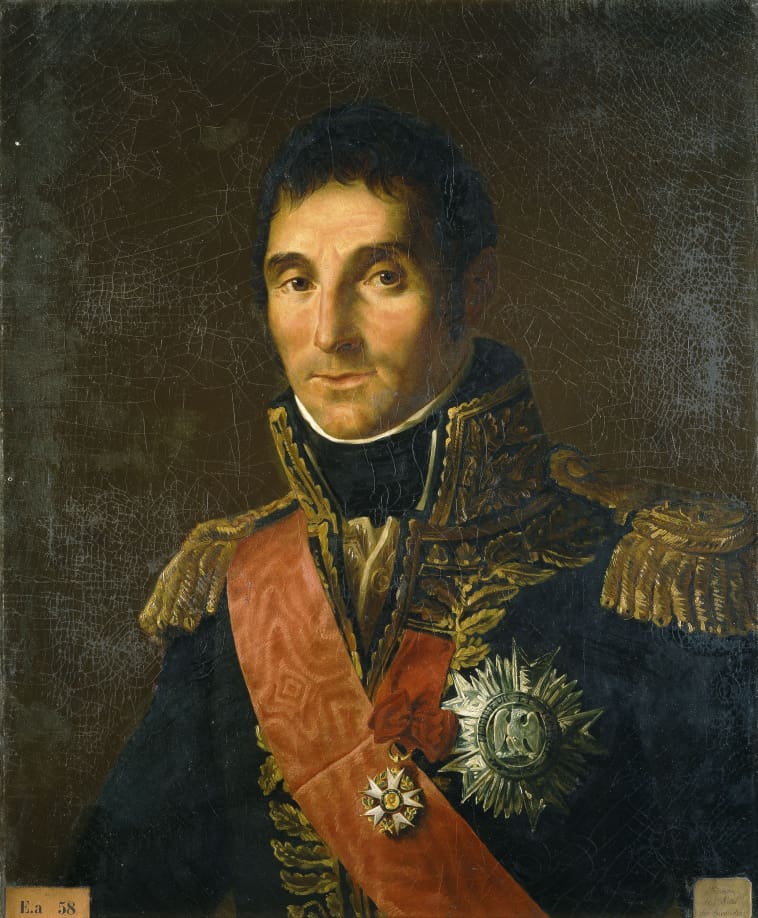
After Antoine-Jean Gros, Public domain, via Wikimedia Commons
André Masséna was a French military commander and Marshal of the Empire who served under Napoleon. He was known for his tactical skills and played a significant role in many of the French army’s victories.
Masséna fought in various campaigns, including the Italian Campaign and the Peninsular War. He was also famous for his successful defense of Genoa in 1800.
5. Michel Ney
Michel Ney was a French soldier and military commander who served as a Marshal of the Empire under Napoleon. He was known for his bravery and leadership skills, and he fought in many of the French army’s most important battles. Ney played crucial roles in the battles of Elchingen, Friedland, and Borodino. He was given the nickname “the Bravest of the Brave” by Napoleon himself.
6. Józef Poniatowski
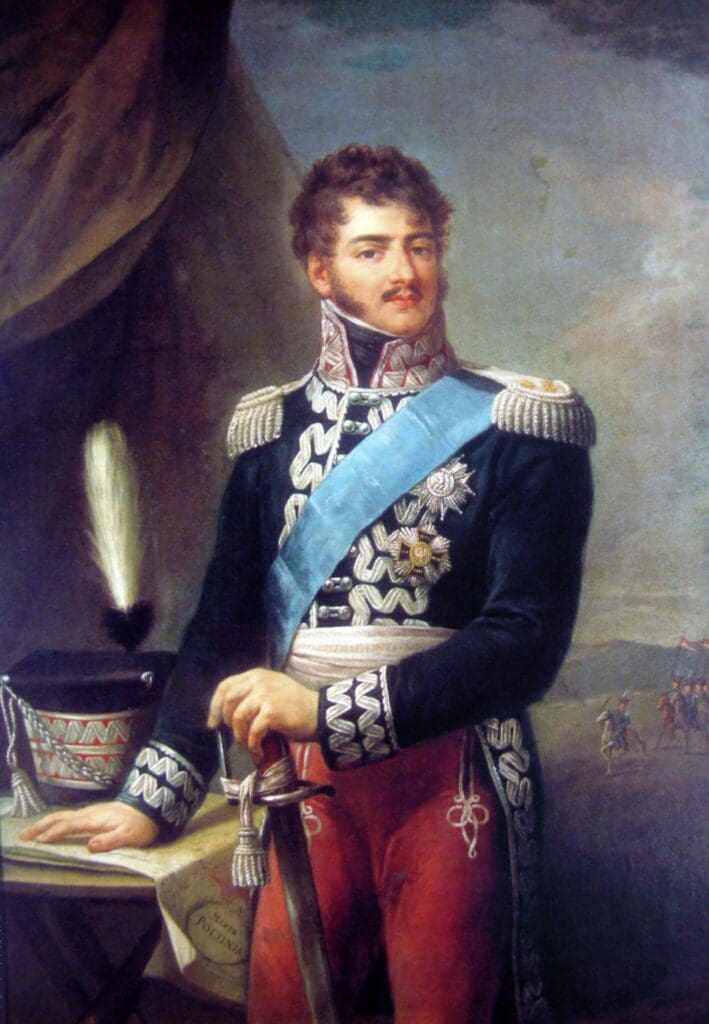
Franciszek Paderewski, Public domain, via Wikimedia Commons
Józef Poniatowski was a Polish general and Marshal of the Empire who served under Napoleon. He fought in many of the French army’s campaigns and was known for his bravery and loyalty to Napoleon.
Poniatowski participated in the 1809 Polish-Austrian War and the French invasion of Russia in 1812. He died in 1813 while covering the French retreat after the Battle of Leipzig.
7. Jean-Baptiste Jourdan
Jean-Baptiste Jourdan was a French military commander and Marshal of the Empire who served under Napoleon. He played a significant role in many of the French army’s victories and was known for his tactical skills.
Jourdan commanded the Army of the Danube and the Army of the Rhine in the early years of the French Revolutionary Wars. He also served as the Governor of the Kingdom of Naples and Spain under Napoleon.
8. Auguste de Marmont

Jean-Baptiste Paulin Guérin, Public domain, via Wikimedia Commons
Auguste de Marmont was a French military commander and Marshal of the Empire who served under Napoleon. He fought in many of the French army’s campaigns and was known for his bravery and leadership skills.
Marmont participated in the Italian Campaign, the Egyptian Campaign, and the Peninsular War. However, he later betrayed Napoleon and surrendered Paris to the Allied forces in 1814.
9. Emmanuel de Grouchy
Emmanuel de Grouchy was a French general and Marshal of the Empire who served under Napoleon. He played a significant role in many of the French army’s victories and was known for his cavalry tactics.
Grouchy fought in various campaigns, including the French Revolutionary Wars and the Napoleonic Wars. He is most famous for his controversial actions during the Battle of Waterloo in 1815.
10. François Christophe Kellermann

Musée historique de Strasbourg, Public domain, via Wikimedia Commons
François Christophe Kellermann was a French military commander and Marshal of the Empire who served under Napoleon. He was known for his leadership skills and played a significant role in many of the French army’s victories. Kellermann distinguished himself during the French Revolutionary Wars, particularly at the Battle of Valmy in 1792. He later served as a senator and a count under Napoleon’s rule.
Planning a trip to Paris ? Get ready !
These are Amazon’s best-selling travel products that you may need for coming to Paris.
Bookstore
- The best travel book : Rick Steves – Paris 2023 – Learn more here
- Fodor’s Paris 2024 – Learn more here
Travel Gear
- Venture Pal Lightweight Backpack – Learn more here
- Samsonite Winfield 2 28″ Luggage – Learn more here
- Swig Savvy’s Stainless Steel Insulated Water Bottle – Learn more here
Check Amazon’s best-seller list for the most popular travel accessories. We sometimes read this list just to find out what new travel products people are buying.











